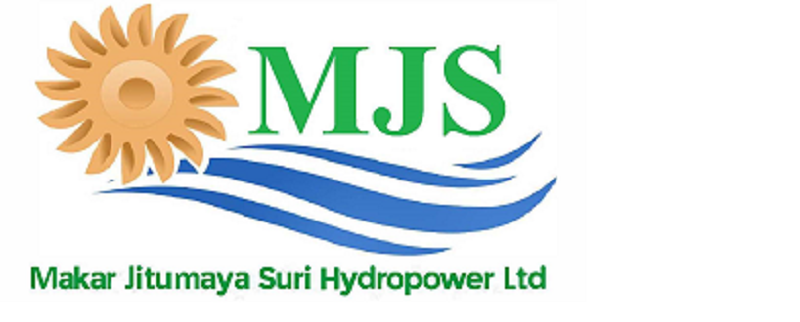Makar Jitumaya Suri Hydropower Company Limited Posted a Net Profit for Q1 FY 2025/26
18th November 2025, Kathmandu
Makar Jitumaya Suri Hydropower Limited (MJS Hydropower), with its registered office in Tripureshwor, Kathmandu, has published its unaudited financial report for the first quarter of the Fiscal Year 2025/26, ending mid-October 2025.
Makar Jitumaya Net Profit
The report presents a detailed look at the company’s financial position, operational challenges, and forward strategies in a period marked by constraints at the power evacuation level.
The company, which operates its projects in Dolakha district, primarily focuses on the Suri Khola hydropower resources. The first quarter results show a complex financial picture, characterized by high long-term investment, significant debt, and profits constrained by external infrastructural issues.
Statement of Financial Position: High Asset Base and Debt
The statement of financial position highlights a capital-intensive structure typical of hydropower companies.
Total Assets: The company reports total assets amounting to 2,75,09,34,884 rupees. The vast majority of this is concentrated in Non Current Assets, totaling 2,62,00,67,931 rupees, with intangible assets (2,61,70,02,130 rupees) representing the substantial cost invested in the hydropower projects themselves.
Cash and Liquidity: Current assets stand at 13,08,66,954 rupees, which includes a significant cash and cash equivalents balance of 4,96,78,145 rupees. This suggests moderate liquidity for handling immediate operational needs.
Equity and Liabilities: Total equity is 82,09,44,132 rupees, built upon a hefty equity share capital of 76,00,00,000 rupees. Liabilities are high, totaling 1,92,99,90,752 rupees. This is predominantly comprised of Long Term Borrowings at 1,91,17,72,908 rupees, indicating a highly leveraged financial structure. Current liabilities are relatively low at 30,23,062 rupees, which includes a small short-term borrowing of 51,00,000 rupees, suggesting manageable short-term debt servicing.
Profit or Loss Statement: Revenue and Profit Generation
The company generated a healthy gross profit despite operational limitations, though the massive finance costs heavily cut into the bottom line.
Revenue: Revenue from the sale of electricity for the quarter was 12,77,64,239 rupees. The management explicitly notes a decrease in revenue compared to the same quarter last year (Ashwin 2081). This decline is directly attributed to transformer capacity limitations at the Singati Substation, forcing the project to operate under the contingency clause of the Power Purchase Agreement, which resulted in reduced generation and sales.
Profitability: Gross profit for the quarter reached 12,35,11,164 rupees. However, the high operational expenses—including Employee Benefits (53,34,267 rupees) and Administrative and Operating Expenses (1,85,97,080 rupees), which were noted to have increased due to company penalties—reduced the Profit from Operation to 7,45,79,983 rupees.
Net Profit: After accounting for substantial Finance Costs of 4,64,92,765 rupees, the Net Profit for the quarter stands at 2,80,87,218 rupees. This figure confirms that despite the challenges, the company is profitable, though heavily burdened by interest expenses on its long-term debt.
Key Financial Ratios and Market Activity
The financial ratios reflect the leveraged balance sheet and moderate returns on equity.
Earnings Per Share (EPS): The Basic EPS for the quarter is 3.70 rupees, which annualizes to 14.78 rupees.
Net Worth: The Net Worth Per Share is reported at 108.02 rupees, slightly above the par value of 100 rupees.
Market Valuation: The P/E ratio stands at a high 146.12, reflecting that the stock is priced at a premium relative to its current earnings, likely due to investor anticipation of future earnings once the Singati Substation issue is fully resolved.
Returns: Return on Assets (ROA) is low at 1.02 percent, and Return on Equity (ROE) is moderate at 3.48 percent, both constrained by the large asset base and substantial debt leverage.
Share Trading: MJS Hydropower shares traded for 51 days during the quarter, with a high price of 690 rupees and a low of 520 rupees, closing at 540 rupees. The trading range indicates high volatility and investor interest, despite the company’s operational constraints.
Management Outlook and Challenges
The management analysis is transparent about the ongoing issues and future strategies.
Operational Challenges: The core operational challenge remains the transformer capacity limitation at the Singati Substation, which directly impacts revenue by reducing electricity generation and sales. The administrative and operating expenses are also elevated due to penalties.
Internal and External Hurdles: The company acknowledges internal issues like retaining skilled human resources and effective fund management. External challenges are significant, including inconsistent regulatory support, limited domestic suppliers, and insufficient transmission line infrastructure—the root cause of their current revenue constraint.
Strategies: MJS Hydropower plans to implement HR optimization, engage with government agencies for an investment-friendly environment, and explore financial instruments with proper risk assessment.
The company affirms its commitment to strong corporate governance and confirms the accuracy of the financial report, with no legal cases or regulatory violations reported during the quarter.
For More: Makar Jitumaya Net Profit









